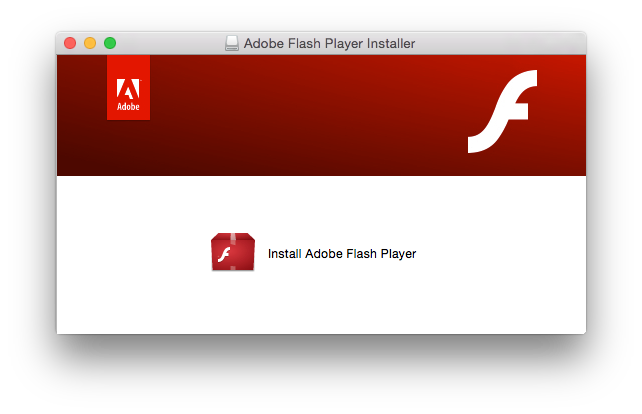Adobe Flash Player is a free software plug-in used by web browsers to view multimedia, execute rich Internet applications, and stream video on your Mac.
- Adobe Flash Player For Yosemite 10.10.5
- Adobe Flash Player For Mac Os X Yosemite 10.10.5yosemite 10 10 5
Adobe Flash Player is the most popular multimedia player plug-in available. However, recently there have been security concerns which has threatened its popularity as users seek safer alternative solutions. Opera, Firefox and Chrome contain built-in versions of Flash running in sandbox mode. This method is safer than running Flash as a plugin. However, currently the reality is that you still may need the Adobe Flash Player on your Mac because many websites will not work well if you uninstall it. Here I’ll show you how to install Adobe Flash Player and how to set it up correctly.
How to install Adobe Flash Player on your Mac.
1. Go to http://get.adobe.com/flashplayer/ to download the Adobe Flash Player installer.
#How to Download Mac OS X Yosemite (10.10) ISO Full Version for free.#Download MacOS X Yosemite#Where can I download MAC OS X ISO installation file to instal. Mac OS X Yosemite 10.10.5 DMG is new release version of the newest operating system for Mac which is now available with direct download link at 4MACSOFT. Mac OS X Yosemite 10.10 has an elegant design that feels entirely fresh, yet inherently familiar. The apps you use every day, enhanced with new features.
2. By default, the installer package will be downloaded to your “Downloads” folder.
3. Select the file on your Mac and double click to install it.
Adobe Flash Player for Mac lets you access Flash content in Web sites when using browsers like OS X's Safari. The plug-in integrates seamlessly and through a preference pane, gives you control.
4. Select “Allow Adobe to install updates (recommended)” and click “DONE” to complete the installation.
If you installed Adobe Flash Player, but still cannot view online videos on certain websites, you need to check Adobe Flash Player on your browsers.
How to set up Adobe Flash Player on various browsers.
Safari
1. Launch Safari and go to the Apple menu bar and click Preferences.
2. Select the Websites tab and select On for “When visiting other websites.”
3. Refresh the browser tab, or restart the browser.
Google Chrome
1. Launch Chrome and type chrome://settings/content in the address field.
2. Select “Ask first (recommended)” and turn it on.
3. Refresh the browser tab or restart the browser.
Opera

1. Launch Opera and go to the Apple menu bar and click Preferences.
2. Select the Websites tab and then select “Allow sites to run Flash”
3. Refresh the browser tab or restart the browser.
Firefox
1. Launch Firefox and go to the Apple menu bar and click Tools – Add-ons.
2. Click the Plugins tab and turn the “Shockwave Flash” to “Always Activate.”
Note: (SWF (Shock Wave Flash) is a special format created by Macromedia, which has been acquired by Adobe. It is widely used in web design, animation production and other fields.)
For enhancing the user experience and security, Adobe is always trying to improve Adobe Flash Player. However, sometimes when you view a website, a Flash Player upgrade popup appears. Most people would click the “update” button to update their Flash Player, but this could be a false popup used by hackers to compromise your Mac. This is a method hackers use to trick you into downloading adware and malware through a false popup.
Be careful and don’t trust any automatic updates of Adobe Flash Player. Here I will tell you how to install real Flash Player updates and set it up.
How to update Flash Player on Mac safely
1. Go to the Apple menu bar and select System Preferences.
2. Select Flash Player.
3. Select the Updates tab and select “Allow Adobe to install updates (recommended)”. (Note: The Flash plug-in is officially updated 1~2 times a month, so selecting this option avoids frequent update.)
4. You may now notice that the Flash Update settings now shows NPAPI and PPAPI plugins. Let me explain them.
NPAPI – used by Safari, Firefox
PPAPI – used by Chromium, Opera and Chrome (Chrome’s implementation is built in)
5. Click Check Now to confirm that you currently have the latest version installed.
If you had clicked a false popup and downloaded adware, don’t worry, the Apple App Store has many antivirus apps, such as Trend Micro’s Antivirus One, that you can use to do a free scan.
Follow the steps below in case you downloaded a fake Adobe Flash Player.
1. When you first install Antivirus One, click “Pattern Update” to make sure your virus pattern is up to date. We suggest you update the virus pattern every day.
2. After the first installation, we highly suggest you perform a full scan of your Mac to check all files for possible infections. The Full scan will take more than one hour.
3. If you still find adware and a full scan has not found any viruses, we recommend you use Adware Cleaner. You can access Adware Cleaner in the left panel of the Antivirus One window.
How to uninstall Adobe Flash Player
Adobe Flash Player for the Mac is a plug-in, not a Mac OS X application. When you try to uninstall Adobe Flash Player from your Mac, you might find that this plug-in is not so easy to delete. For example, you might see this message:
Cannot find Adobe Flash Player in your Applications folder.
In this case, Adobe Flash Player could not be removed and no reason was given. The following steps show how to uninstall Adobe Flash Player with no remaining parts.
1. Go to the /Applications/Utilities/ folder on your Mac and double-click the Adobe Flash Player Install Manager app.
2. Click Uninstall to begin the process.
3. Type the password and click Install Helper.
4. If your browser is running, the following window will appear. Select “Force Close All” to continue.
5. After the uninstaller removes the Adobe Flash software from your Mac, click Done.
Related posts:
Adobe Flash Player For Yosemite 10.10.5
Nov 29,2019 • Filed to: PDF Editor
When using Adobe Acrobat on Mac OS X Yosemite (Catalina included), you might find that Adobe Acrobat not working on Yosemite for unknown reasons, or they cannot edit PDF with Adobe Acrobat 9 on Mac Yosemite. If you have the problem of Adobe Acrobat not working on Yosemite, no worry, you can get help from an Adobe Acrobat for Yosemite alternative. Here is the best solution to fix Adobe Acrobat problems.
The Best Adobe Acrobat for Yosemite Alternative
PDFelement Pro - The Best Adobe Acrobat Alternative
PDFelement Pro (Catalina included) is the best Adobe Acrobat for Mac Yosemite alternative for you. This PDF tool comes with the same functions but cheaper than Adobe Acrobat. It can help you to edit PDF files with diversified editing tools. You can also annotate, mark up or leave comments to PDF. And it provides the security option allows you to protect your PDF with password. Besides, you can convert PDF to Word, Excel, PPT, HTML, Images and more, vise verse. (iSkysoft PDF Editor 6 Professional for Windows users is also available.)
Why Choose This Alternative to Adobe Acrobat for Yosemite:
- Easily edit, add, insert, and delete texts, images and pages in PDF files.
- Convert PDF to formats like MS Word, Excel, EPUB, HTML, Images, vise verse.
- You can combine, split and compress PDF, as well as delete, insert, rotate or crop PDF pages.
- Edit and convert scanned PDF as easy as a breeze. Support multiple OCR languages.
- The best PDF editor for Yosemite, EL Capitain, and macOS Sierra.
How to Edit PDF with Adobe Acrobat for Yosemite Alternative

Step 1. Edit PDF Texts, Images, Links, and More
Launch this Adobe Acrobat for Mac Yosemite Alternative. Click the 'Open File' option to select the PDF document you want and import it to the program. Then your PDF file will be opened with the program.
In the main interface, click the 'Edit' button on the top toolbar, then you can double click anywhere on the PDF file to add or delete texts. And you can double click on the image to replace, crop or extract it from the file. It will be the same way to edit links and other elements in PDF file.
Step 2. Annotate and Mark up PDF on Mac Yosemite (Catalina included)
By clicking the 'Comment' button, you can find annotation and markup tools like Sticky Note, Text Box, Links, Arrow, Line, Freehand Drawing, and more. You can double click anywhere on the PDF and select the texts to place the annotations. To highlight PDF, you can click the 'Highlight' button on the top right corner of the interface.
Step 3. Convert PDF to Word, PPT, Excel, etc.
To convert PDF to other formats, you can click the 'Convert PDF' in the launch interface. And you will get a pop-up window to import the PDF files. And then select the output format and start the conversion.
To convert multiple PDF, you can click on the 'Batch Processing' in the main interface, and then click the 'Add Files' button to select the PDF files from your local hard drive and import them to the program. Then click the format option on the top right corner to choose an output format. And specify the pages you want to convert and click the 'Convert' button to start the conversion.
Step 4. Fill out and Create PDF Form with Adobe Acrobat for Yosemite Alternative
To fill out PDF form, you first open the PDF form with the program. And click 'Form' and then you can start to fill out PDF form.
Adobe Flash Player For Mac Os X Yosemite 10.10.5yosemite 10 10 5
If you want to create a PDF form, you can download a built-in Form Template. Then go to 'Form' to launch the form building tools to customize the form.